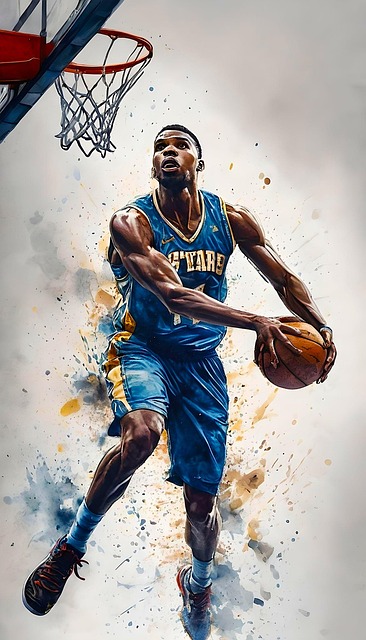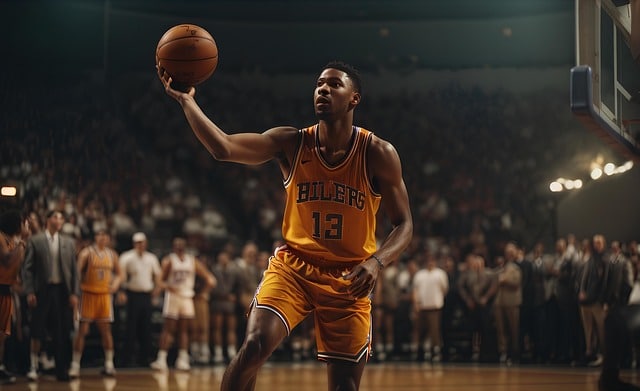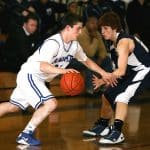In basketball, defense often gets overshadowed by the flashy offensive plays, but any seasoned player or coach will tell you—defense wins championships. While scoring may steal the spotlight, without solid defense, a team is like a leaky boat; no matter how many points you rack up, your opponents will eventually catch up. The key to shutting down any offense is understanding and mastering defense techniques that disrupt, confuse, and frustrate your adversaries.
In this article, we’ll explore some of the most effective basketball defense techniques that can help you become a lockdown defender, forcing turnovers, blocking shots, and ultimately giving your team the edge it needs to come out on top. Whether you’re a seasoned pro or just starting, these techniques are the building blocks of becoming a defensive powerhouse.

1. Man-to-Man Defense: The Foundation of Personal Defense
Let’s start with the bread and butter of basketball defense: man-to-man defense. In man-to-man, each player is responsible for guarding a specific opponent. You’re not just a part of the defense—you’re a shadow, a thorn in the side of your opponent, making it nearly impossible for them to get a clean shot off.
Why It Works:
Man-to-man defense forces players to be accountable for their individual assignments, and it requires a high level of discipline. The beauty of this technique lies in its simplicity. By focusing on one player, you can stifle their offensive flow and prevent them from executing plays smoothly. However, it’s not just about staying in front of the ball handler; it’s about positioning, anticipation, and constant pressure.
Key Tips for Mastering Man-to-Man:
- Stay Low and Move Your Feet: Defensive footwork is essential in man-to-man defense. Always stay low in your stance, and move quickly laterally to stay in front of your opponent.
- Anticipate the Pass: Don’t just focus on the player you’re guarding—keep an eye on the ball and anticipate where it’s going. This can help you jump passing lanes and get steals.
- Close Out Quickly: When your man receives the ball, close out with urgency. But don’t just rush in mindlessly—use your hands to contest the shot while maintaining a strong defensive stance.
2. Zone Defense: Control the Paint and Force Bad Shots
While man-to-man defense is all about individual responsibility, zone defense shifts the focus to guarding space. In a zone, each defender covers an area of the court rather than a specific player. This defense works wonders when you want to pack the paint and force the offense to shoot from the outside.
Why It Works:
Zone defense can be an effective way to prevent easy drives to the basket and cut down on interior scoring. By covering the paint and keeping defenders near the basket, you can frustrate opponents who thrive on driving or posting up. Zone defense also helps conserve energy because players don’t have to chase their assignments all over the floor.
Key Tips for Mastering Zone Defense:
- Stay Disciplined and Communicate: The key to a successful zone defense is communication. Since each player is covering a specific area, it’s vital that everyone knows their role and helps each other. Always talk to your teammates about who’s screening, who’s switching, and where the ball is.
- Keep Active Hands: Zone defense isn’t passive. While you’re not guarding a specific player, you need to be aware of ball movement and keep your hands active to contest shots and prevent passes.
- Anticipate Shots and Close Out: If an offensive player starts to set up for a shot, close out with urgency. Whether you’re in a 2-3 zone or a 1-3-1, don’t allow open jumpers.
3. Defensive Footwork: The Key to Staying in Front
Good defense starts with defensive footwork. You can have the best hands and the quickest reflexes, but without proper footwork, you won’t be able to stay in front of your opponent and effectively guard them. Great defenders are always moving their feet, staying low, and constantly adjusting to the ball handler’s movements.
Why It Works:
Great footwork allows you to mirror your opponent’s movements. Whether they’re trying to drive past you, pull up for a jumper, or make a quick cut, solid footwork allows you to stay in front and cut off their options. Moreover, defensive footwork helps you stay balanced, which is crucial when trying to steal the ball or contest a shot.
Key Tips for Improving Defensive Footwork:
- Shuffle, Don’t Cross Over: When defending the ball handler, always shuffle your feet side to side. Crossing your feet can leave you vulnerable to getting beat off the dribble.
- Stay Low and Balanced: Keep your hips low and your center of gravity even lower. This gives you better mobility and makes it harder for your opponent to blow by you.
- React Quickly: Anticipate the ball handler’s moves, and don’t be afraid to pivot when they change directions. Quick, sharp movements can help you regain position.
4. Blocking Shots: Not Just for the Big Guys
Blocking shots is often associated with centers and power forwards, but even guards can play a crucial role in shot blocking. Blocking shots requires timing, positioning, and an ability to read the shooter’s intentions. You don’t always have to go for a block—sometimes just contesting the shot can be just as effective.
Why It Works:
Shot blockers intimidate opponents. When players know that a defender is capable of swatting their shot, they often hesitate, alter their release, or even choose not to drive to the basket. Plus, blocking shots can shift the momentum of the game and fire up your team.
Key Tips for Blocking Shots:
- Know When to Jump: Timing is everything. Jumping too early or too late can result in an easy layup. Wait until the shooter goes up, and then meet them at the apex of their jump.
- Don’t Go for Every Shot: Sometimes it’s better to contest the shot without jumping. Going for a block on every shot can result in fouls and put you out of position.
- Use Your Length: Even if you’re not a natural shot blocker, use your length and position to make it difficult for the shooter.
5. Stealing the Ball: Creating Turnovers and Breaking Up Plays
One of the most satisfying moments in basketball is when you swipe the ball right out of your opponent’s hands. Stealing the ball is a game-changer—creating turnovers, shifting momentum, and sometimes even leading to easy transition points. But it’s not all about trying to grab the ball at every opportunity. It’s about timing, positioning, and anticipating passes.
Why It Works:
When you steal the ball, you not only take possession for your team, but you also disrupt your opponent’s rhythm. Steals often lead to fast-break opportunities and easy points. A well-timed steal can deflate the offense and shift momentum in your favor.
Key Tips for Stealing the Ball:
- Anticipate the Pass: The best steals come from anticipating a pass and jumping the lane. If you know where the ball is likely to go, position yourself to cut it off.
- Active Hands: Keep your hands up and always be moving. The more active you are, the more likely you are to deflect or steal the ball.
- Pressure the Ball: When guarding the ball handler, apply constant pressure without over-committing. The more pressure you apply, the more likely they are to make a mistake.
6. Press Defense: Crank Up the Pressure
When you want to apply full-court pressure and force turnovers, press defense is the way to go. This strategy involves pressuring the ball handler as soon as they inbound the ball, forcing them into mistakes and hurried decisions. Press defense can catch your opponents off guard and lead to fast breaks and easy baskets.
Why It Works:
Press defense disrupts the offense’s ability to bring the ball up the court comfortably. By applying full-court pressure, you force the offense to play at a faster pace and can create turnovers. However, it requires teamwork and discipline to be effective.
Key Tips for Press Defense:
- Stay Aggressive but Controlled: The goal is to pressure the ball handler without fouling. Stay aggressive but be mindful of your positioning to avoid easy layups.
- Communicate: In a press, communication is vital. Players need to know when to trap, when to switch, and how to rotate.
- Be Ready to Rotate: If the ball is passed to a teammate, you must quickly rotate to cover the new ball handler.
7. Defensive Rotation: Moving as One
Finally, defensive rotation is the glue that holds your defense together. When one player gets beat or needs help, the others must rotate to cover for them. This requires quick thinking, awareness, and coordination. The ability to rotate seamlessly from one defender to the next can prevent easy baskets and shut down even the most potent offenses.
Why It Works:
Defensive rotation ensures that even if one player gets beat, the defense remains intact. This helps maintain defensive pressure and prevents open shots or layups. Without rotation, the defense can quickly fall apart and leave gaps for the offense to exploit.
Key Tips for Defensive Rotation:
- Always Know Where the Ball Is: Defensive rotation is all about reading the ball and knowing when to help and when to recover to your man.
- Be Quick and Fluid: Rotating too slowly leaves you vulnerable to quick passes or easy cuts. Rotate quickly and efficiently to keep the defense tight.
Conclusion
Mastering these basketball defense techniques is
essential for shutting down any offense. Whether it’s man-to-man defense, zone defense, shot blocking, or stealing the ball, each technique plays a crucial role in disrupting your opponent’s rhythm and preventing easy scores. With practice, dedication, and a focus on fundamentals like defensive footwork, positioning, and communication, you can become the defensive juggernaut your team needs. Remember, defense isn’t just about stopping the ball—it’s about making life difficult for the offense and forcing them to play at your pace. So, get out there, lock down your opponent, and make defense your team’s secret weapon!



